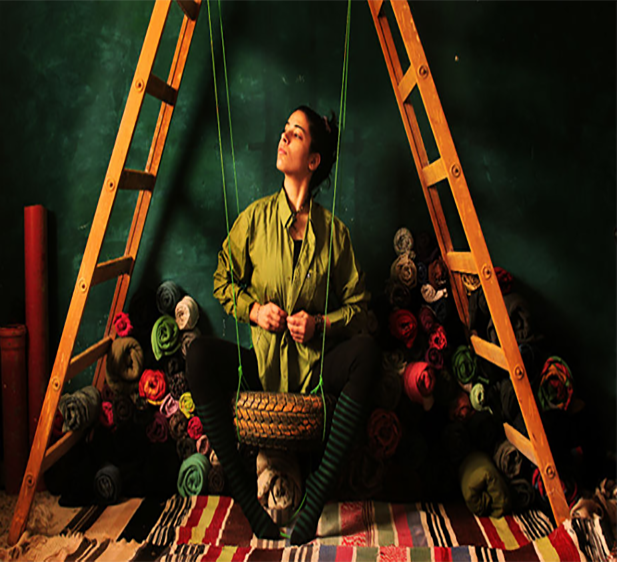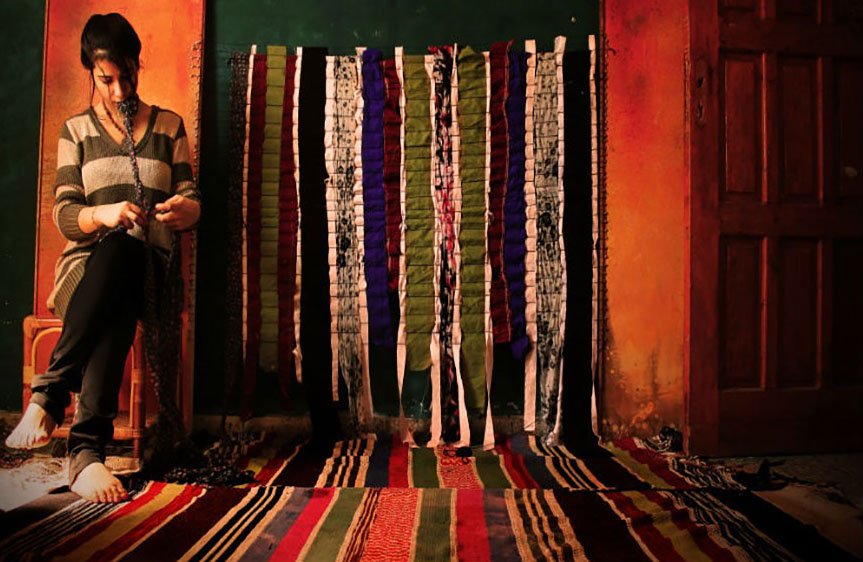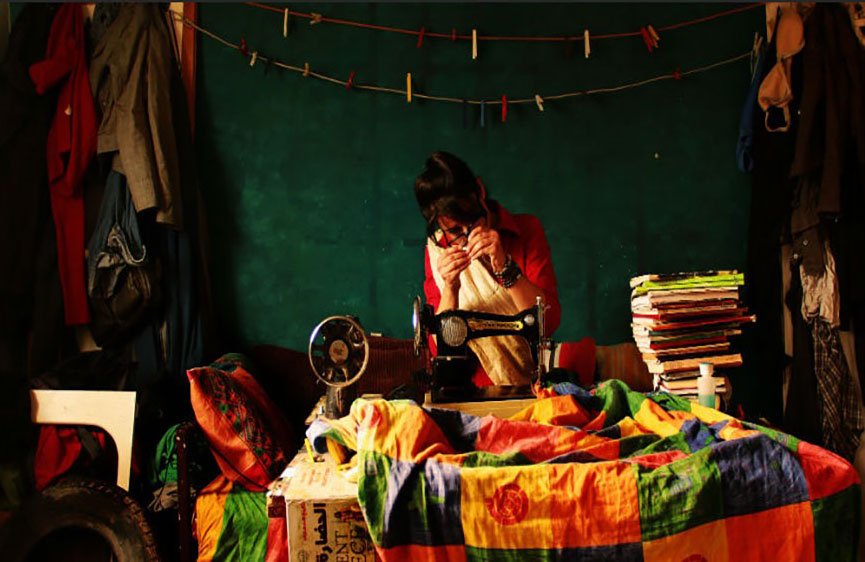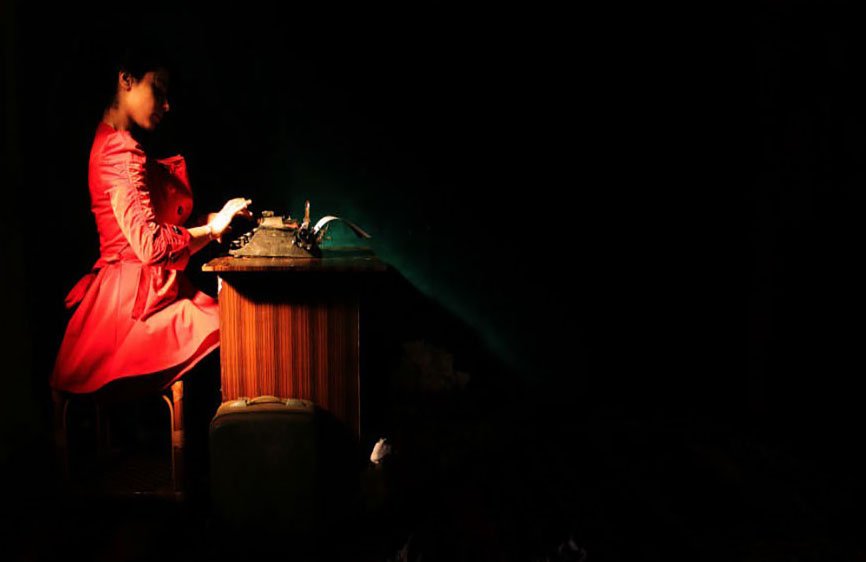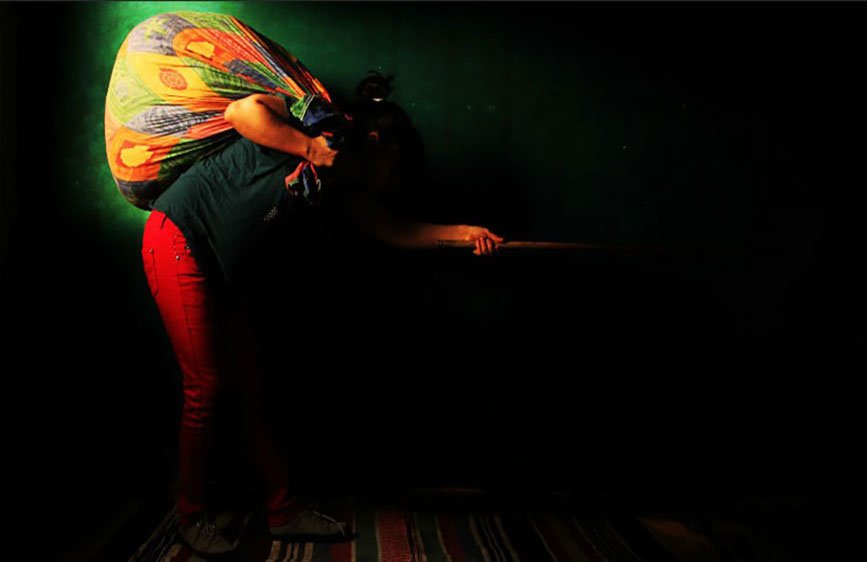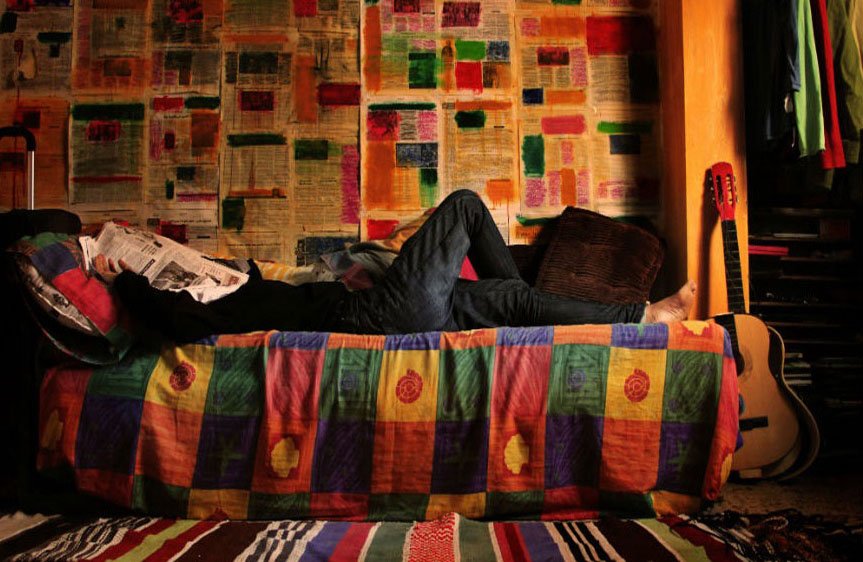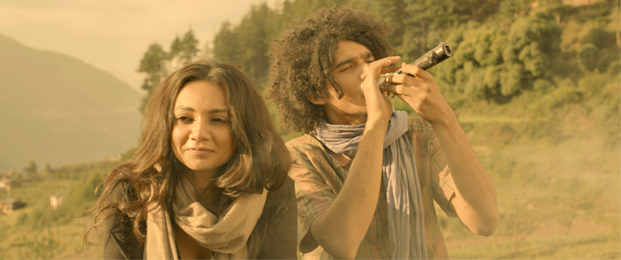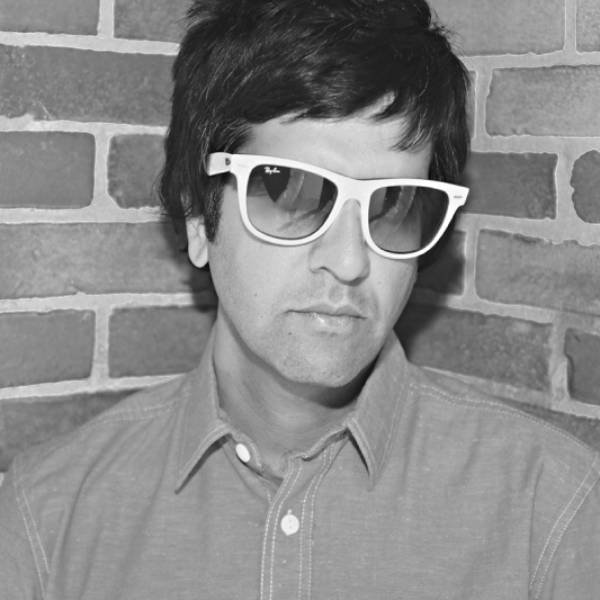Palestine –
Introspection for an “Outsider”
The Outsider by British novelist Colin Wilson, who popularized the notion of a new existentialism, told the story of a man who found solace in a strict self-imposed discipline and a deep level of inwardness. A man who learned to control his life and search for his own way outside of society, in a form of meditation and inner freedom. Within her bedroom, Nidaa Badwan revisits The Outsider and the work of her favourite author.
This is the story of an “outsider girl”: outside of the world, outside of social norms, cloistered in her bedroom. The visual narration of a Gazan artist who, in her own words, defines herself as “different” and who “does not belong to anything or anywhere.” This woman is a thousand faces of a same girl, as well as a thousand women of her own society. After a closer look, we see that her pictures paint the intimate portrait of a multifaceted society, together wounded and joyful, nostalgic and playful.
Throughout her series of colourful photographs, Nidaa Badwan projects the viewer into her intimate universe, the daily reality of a faceless woman -her face is only clearly seen once- which gives her work a universal scope. The young creator directs herself as in a play: she cries, sews, puts on makeup, meditates, dozes off… As the protagonist of her own work, she follows as much as renews a tradition dear to the female pioneers of contemporary Palestinian photography, who have turned this sort of self-staging into an artistic leitmotiv.
Armed with a simple but “vital” camera, inside her bedroom, the graduate of Gaza’s Al-Aqsa University Department of Fine Arts captures her universe as would a painter: controlled pictorial compositions, delicate chiaroscuros and well developed warm colours. While fascinated by nanotechnologies and quantum physics, she revisits classic still life paintings: the bright colours remind the viewer of Van Gogh, who Badwan describes as “a master”; Caravaggio’s chiaroscuros also come to mind, as well as Chardin’s still life and genre paintings )Le Château de cartes, 1737( or David’s highly dramatised neoclassical works )The Death of Marat, 1793(.
This contrast can also be found in the inside / outside dialectic. Outside, a conservative Gaza Strip ruined by repeated assaults and an enduring blockade- outside: death. Inside, a flurry of life and endless creativity – inside: life. The power of Nidaa Badwan’s work is precisely this ability to distance itself from the local direct representation of violence, to offer, poetically and humorously, a new way of perceiving existence. With her photographs, she breathes actual life into still life works. “I want to return its colours to Gaza, which knows neither colours nor peace”
She confided a month after the war in the summer of 2014. Badwan, like many artists of the new generation, turns away from the narrative of victimhood, finding her own rhetoric that is both more personal and more critical, and questioning, or even putting aside the collective or national notions. At a time when the peace process has failed, the national ideal is in dire straits and leaders have lost all credit, the artist turns inwards to her own private and artistic sphere, where she can find more hope than in most political speeches. This withdrawal and this staging of the self are not meant to serve a self-centred narrative, but on the contrary to shift this narrative and bestow upon it a dimension as original as it is universal.
Nidaa Badwan‘s first photographic exhibition is not a mere nod at Gabriel García Márquez’s famous novel. It is the result of an actual, self-imposed retreat by the artist who has not left her room for over a year. Since December 19 2013, Nidaa Badwan adheres to a strict ascetic way of life in which she refuses to leave her isolation, even during the war, a time during which she stayed alone to create, while bombs were raining down on her neighbourhood of Deir Al-Balah, south of Gaza City.
Nidaa Badwan composes her pictures with makeshift materials and items scavenged in her home: the vegetables her mother brought back from the market, a stool that turns now into shelves, now into a swing, or the barbed wire rolls that she uses as interior decoration… all the excuses are good enough to draw beauty from nothing and breathe humanity into things. This economy of means is the mark of “emergency art”, attesting to an actual existentialist project. As a humanist, the creator demonstrates, in line with Sartre’s words, that “each individual is a unique being who is the master not only of her actions, but also of her fate.”
In the middle of a 360-square kilometres open-air prison, the artist decides to remain confined in a fistful of square metres and “find its beauty” there. By recreating a form of chosen imprisonment, the artistic and existential performance can be seen as a catharsis experience for the young artist who only dreams of “creating a new world.” “I want to turn Gaza into something beautiful, to change things.” A hundred days of solitude for Nidaa Badwan, who explores her deepest inner self to extract from it life, creativity and freedom. In her creative retreat, this “outsider girl” tells the story of a Gaza that is rebelliously beautiful.
Art & Culture Featured – Written by Marion Slitine – PhD Candidate in Anthropology (Musée du Quai Branly / EHESS – School of Advanced Studies in Social Sciences – Paris), specialist of Palestinian contemporary art.

